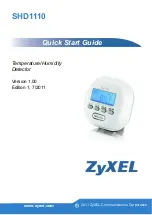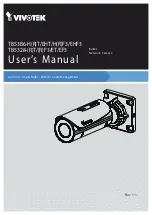
ES-2000 Series Switch Support Notes
All contents copyright (c) 2006 ZyXEL Communications Corporation.
42
process the frame across the network. A tagged frame is four bytes longer than an
untagged frame and contains two bytes of TPID (Tag Protocol Identifier, residing
within the type/length field of the Ethernet frame) and two bytes of TCI (Tag Control
Information, starts after the source address field of the Ethernet frame).
•
TPID:
TPID has a defined value of 8100 in hex. When a frame has the
EtherType equal to 8100, this frame carries the tag IEEE 802.1Q / 802.1P.
•
Priority:
The first three bits of the TCI define user priority, giving eight (2^3)
priority levels. IEEE 802.1P defines the operation for these 3 user priority bits.
•
CFI:
Canonical Format Indicator is a single-bit flag, always set to zero for
Ethernet switches. CFI is used for compatibility reason between Ethernet type
network and Token Ring type network. If a frame received at an Ethernet port
has a CFI set to 1, then that frame should not be forwarded as it is to an
untagged port.
•
VID:
VLAN ID is the identification of the VLAN, which is basically used by the
standard 802.1Q. It has 12 bits and allows the identification of 4096 (2^12)
VLANs. Of the 4096 possible VIDs, a VID of 0 is used to identify priority
frames and value 4095 (FFF) is reserved, so the maximum possible VLAN
configurations are 4,094.
Note that user priority and VLAN ID are independent of each other. A frame
with VID (VLAN Identifier) of null (0) is called a priority frame, meaning that
only the priority level is significant and the default VID of the ingress port is
given as the VID of the frame.
















































